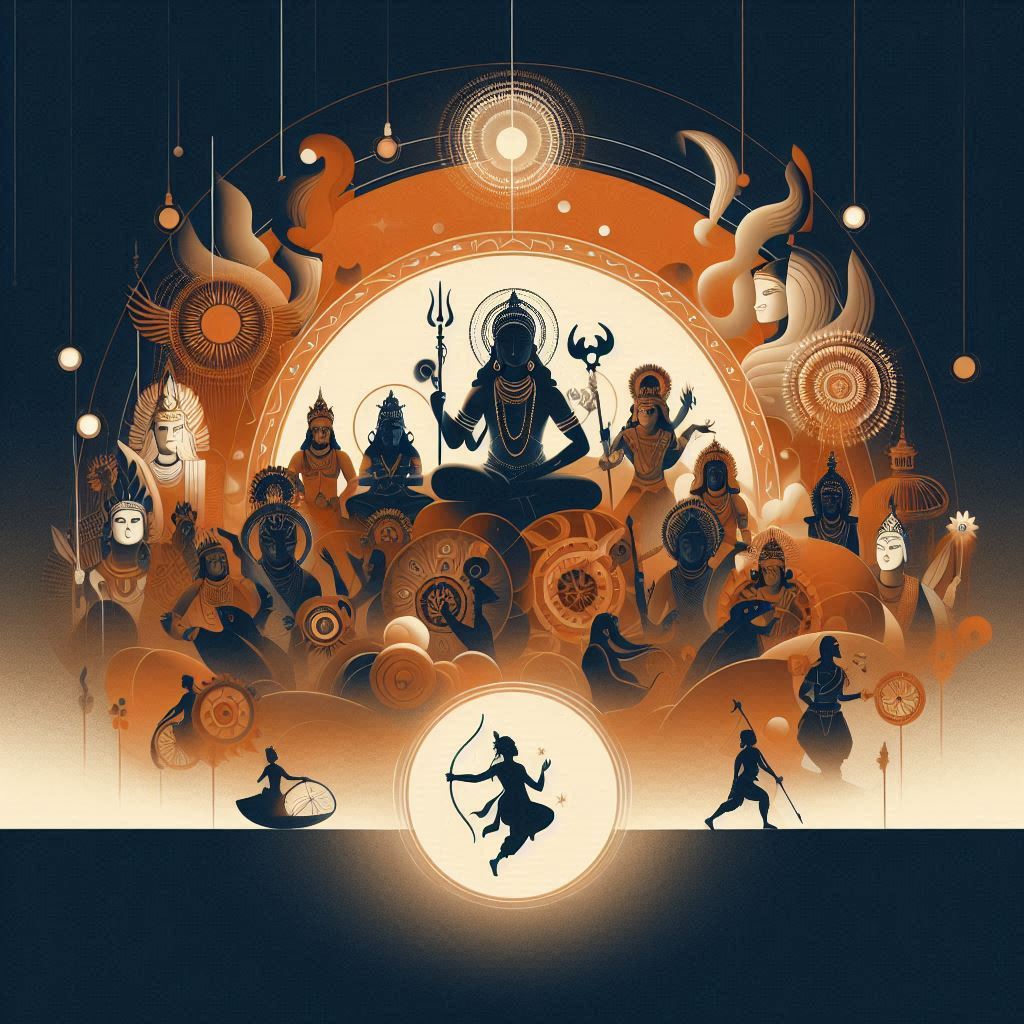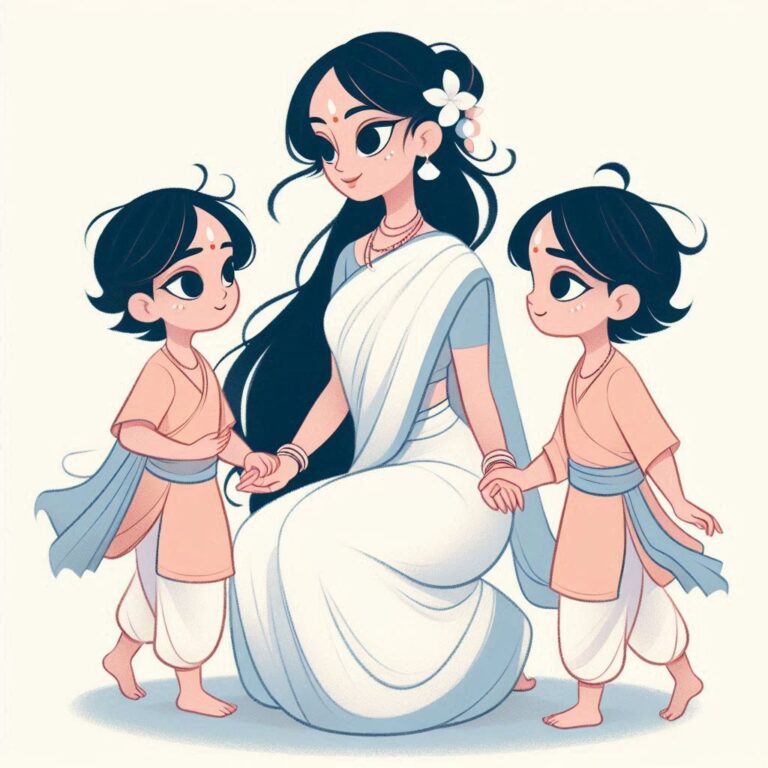Ramayana’s Influence in Modern Media: A Cultural Exploration
Ramayana in Today’s Media: A Modern Representation
The Ramayana—a timeless epic that has captured hearts and minds for centuries—continues to hold a special place in contemporary media. From television series and films to graphic novels and digital content, the representation of this monumental tale in modern times reflects both its deep cultural roots and its adaptability to new narrative forms. So, how exactly does the Ramayana resonate with today’s audiences, and what makes it a continuous source of inspiration? Let’s delve into this fascinating topic!
The Ramayana: A Quick Overview
Before we leap into how this ancient story is interpreted in contemporary media, let’s take a brief moment to appreciate what the Ramayana is all about. Authored by the sage Valmiki, it narrates the journey of Lord Rama, his wife Sita, and his loyal companion Hanuman as they battle the demon king Ravana. Themes of duty, honor, love, and resilience are woven throughout this epic, offering lessons that remain relevant across generations.
Why Ramayana Matters Today
The Ramayana isn’t just a story from the past—it’s a vibrant tapestry that teaches values and principles that are just as applicable in our current society. The underlying morals, such as respect for family, the importance of righteousness (Dharma), and the quest for truth, resonate strongly even in modern contexts. We often find ourselves pondering whether these themes are echoed in the stories we consume today.
Modern Media Interpretations
Let’s dive into how the Ramayana finds its place across various forms of contemporary media!
1. Television Series
One of the most prominent forms of representation is the television adaptation of the Ramayana. In India, shows like “Ramayan” (1986) and its recent reboots have attracted millions of viewers. The grand visuals, powerful performances, and dramatic storytelling create a captivating experience, allowing viewers to engage with the epic on an emotional level.
But it’s not just in India. Globally acclaimed series, like “Rama and Sita”, attempt to portray the saga, making it accessible to a wider audience. These adaptations often highlight character motivations and relationships, allowing for a deeper understanding of the characters’ actions and conflicts.
2. Films: A Cinematic Perspective
Indian cinema has a long-standing relationship with the Ramayana, but the digital age has brought a new wave of films that reimagine the tale. Movies like “Raavan” and “Ravan Raaj” explore darker interpretations of the characters within the Ramayana, challenging traditional narratives and providing fresh perspectives.
It’s fascinating how modern filmmakers use state-of-the-art technology to depict celestial battles and epic confrontations between good and evil. These cinematic experiences not only entertain but also spark discussions about morality and ethics—powerful themes that the Ramayana embodies.
3. Graphic Novels and Comics
In the age of visual storytelling, graphic novels and comics featuring the Ramayana play a significant role in reaching younger audiences. Series like “Ramayana 3392 AD” present the epic in a sci-fi setting, making it relevant for those who might not connect with the traditional narrative style.
Why does this matter? Because these adaptations encourage a new generation to engage with the fundamentals of the epic while enjoying a modern twist. A young reader might just find themselves drawn into the complex ethical dilemmas faced by Ram or the bravery of Hanuman simply because of a compelling illustration!
4. Digital Platforms
Let’s not forget about digital media. Platforms like YouTube and streaming services have blown open the doors for reinterpretations and discussions about the Ramayana. You might stumble across vlogs, animations, or informal group discussions that analyze specific aspects of the epic—like the character of Sita or the philosophical implications of Rama’s decisions.
The beauty of the digital age lies in its accessibility; now, anyone can engage with the Ramayana from anywhere in the world, fostering a global community interested in learning about and discussing these ancient teachings.
5. Music and Dance
The Ramayana has also significantly influenced contemporary music and dance. Classical dance forms like Kathak and Bharatanatyam often incorporate themes from the epic. Even modern artists blend traditional narratives with contemporary beats—think of a hip-hop artist sampling verses that talk about loyalty and bravery.
There’s a certain magic in seeing traditional stories transformed into modern artistic expressions. They not only preserve the essence of the Ramayana but also invite creative exploration—much like how a painter interprets a scene from the epic in a unique way.

The Lessons We Learn
It’s one thing to enjoy the retelling of the Ramayana, but what lessons are we truly taking from it in today’s fast-paced world? Here are some core takeaways that still resonate:
- Dharma (Righteousness): The pursuit of righteousness is a timeless principle.
- Loyalty: Characters like Hanuman demonstrate the value of loyalty and friendship.
- Courage: The bravery shown by Sita and Rama inspires us to face challenges head-on.
- Compassion: The Ramayana teaches us about compassion for all beings, including our enemies.
Reflecting on these themes can be a powerful way to navigate the complexities of modern life, don’t you think?
Reflections on Modern Representation
Now that we’ve explored various representations of the Ramayana, it’s worth pondering how these adaptations influence our collective memory and cultural identity. Do they enrich our understanding of the epic? Or do they dilute its essence? Can we maintain the depth of tradition while embracing modernity? The debate continues, as it should!
Conclusion
The representation of the Ramayana in contemporary media exemplifies the dynamic nature of storytelling. Each retelling—be it in films, series, comics, or online videos—offers a new lens through which we can explore eternal themes. There’s a sense of enjoyment in seeing how this ancient epic adapts to modern contexts while still preserving its core messages. Isn’t that the magic of storytelling? It shapes, transforms, yet endures.
So next time you engage with a retelling of the Ramayana, take a moment to reflect on what it means to you, how it resonates with contemporary society, and the lessons it continues to impart. After all, the Ramayana may be a tale as old as time, but its relevance is as fresh as the day it was written.
FAQs
Q1: What is the Ramayana about?
A1: The Ramayana is an ancient Indian epic that narrates the journey of Lord Rama, his wife Sita, and his companion Hanuman as they battle the demon king Ravana, exploring themes of duty, honor, and love.
Q2: How has the Ramayana been portrayed in modern media?
A2: The Ramayana has been adapted into various forms including television series, films, graphic novels, and digital content, each exploring its themes in new and innovative ways.
Q3: What lessons can we learn from the Ramayana?
A3: The Ramayana teaches important lessons about righteousness (Dharma), loyalty, courage, and compassion, all of which are applicable in today’s world.
Q4: Why is the Ramayana still relevant today?
A4: The timeless themes and moral dilemmas presented in the Ramayana resonate with contemporary audiences, making it a rich source of cultural exploration and personal reflection.
Q5: Are there any upcoming adaptations of the Ramayana?
A5: There are always new adaptations of the Ramayana being planned across various media platforms. Keep an eye out for upcoming films, series, or even graphic novel retellings that may bring fresh perspectives on this ancient epic!







